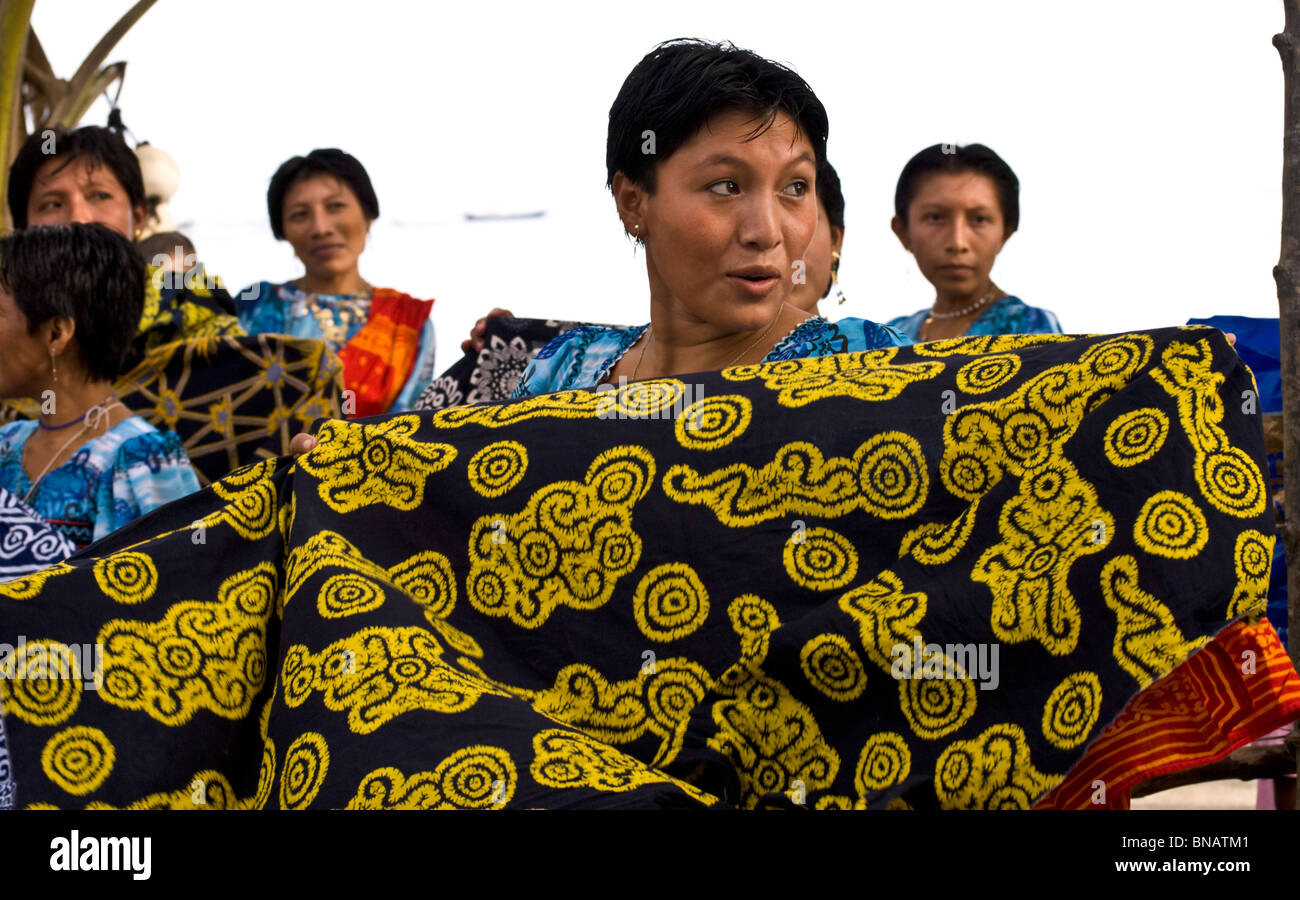Attractive Kuna Indian woman showing their painstakingly hand crafted molas to tourists, hoping for a sale.

Image details
Contributor:
Hello World Stock Library / Alamy Stock PhotoImage ID:
BNATM1File size:
26.7 MB (1.2 MB Compressed download)Releases:
Model - no | Property - noDo I need a release?Dimensions:
3872 x 2413 px | 32.8 x 20.4 cm | 12.9 x 8 inches | 300dpiDate taken:
2010Location:
East Lemmon Cays, Kuna Yala, San Blas Islands, Panama, South AmericaMore information:
The Comarca de Kuna Yala is a semi-autonomous region which is homeland to the Kuna Indians. Nearly 400 islands off the eastern Caribbean coast of Panama, along with a mountainous strip of mostly virgin forest on the mainland along the Caribbean slope of the Darien, runs the length of the archipelago, ending at the Colombian border. The Kuna population of 40, 000 inhabit just 40 of the islands, the rest are uninhabited, small, with soft white sand, coconut palms, crystal clear, pristine blue water and spectacular coral. The inhabited islands, none of which are very large, get pretty crowded with the thatch roofs of the Kunas' cane huts almost touching in many places. On the inhabited islands garbage and sewage is unfortunately routinely dumped in to the sea; most of the islands have no electricity and life continues much as it has for hundreds of years. Toilet facilities are built on the water's edge from bamboo with the usual thatched roof and discharge directly in to the sea. The Kuna still adhere to their tribal laws and part of their agreement with Panamian authorities is that they respect these laws which are administered by the Kuna general 'congreso'. Kuna Yala is a matrilineal society, the woman control the money and the husband moves in to the women's family compound. The chiefs of the 'congreso' are called Sailas and every village has two oversized huts - the 'congreso' and the 'chica'. The 'congreso' or the 'town hall' is a gathering place for villagers most evenings. At a 'congreso' meeting, the Sailas would be found swinging in hammocks and the rest of the tribe share hard, wooden seats. The Sailas often sing long sacred songs about their ancestors and past exploits, including battles with the Spanish invaders. This follows a long tradition of passing down oral history from generation to generation. The 'chica' hut is used for spiritual events, the 'chica' ritual is held once or twice a year. It is also an intoxicating brew.